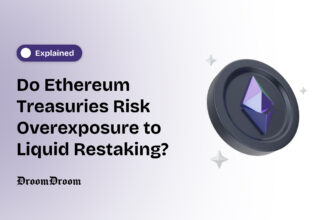Before being utilized in blockchain technology, tokenization was used by banks, hospitals, and governments to make sure that personal data, transactions, and mastercards were kept safe.
As more advancements were made in the technology world, especially in the finance sector, that brought about the existence of cryptocurrencies and blockchains. Tokenization has become an important tool that is being used to secure data and transactions made online. Tokenization simply refers to changing useful data into unique tokens that have symbols and still retain the original meaning or value. The end product is known as a token
Types of Tokenization
Many types of tokenization exist. Each type of tokenization is available due to the difference in the field that is being represented. In the cryptocurrency field, there are different types of tokens, which will be highlighted in this article.
Transactional tokens
These are the tokens in charge of making transactions. They make sure that transactions are safe and are executed logically. They are cheaper as the transactional costs are relatively lower, whereas users can conduct several transactions.
Utility tokens
These are tokens that are made to serve a different purpose apart from being a medium of exchange. The most common example of utility tokens are airdrops, which are created before an asset is released into the market, and upon release, they can be exchanged for the asset or traded on behalf of the asset.
Security tokens
These are tokens that give the owner legal ownership of the assets, grant permission for transferring assets, and use other features in the blockchain. They are created for authentication and can be used by only one person.
Platform tokens
These are tokens made to support the stability of decentralized apps (dApps) on a blockchain. They help in securing personal data and transactions made on the dApps.
Tokenization and Encryption
Though tokenization and encryption may look as if they offer the same service, there is a big difference between the two. Tokenization involves changing the original data into symbols to retrieve data, while encryption refers to changing data into unreadable data that requires an algorithm or unique code to decrypt and enable it to be readable again.
Tokenization and encryption can be used as security measures for transactions and data, but their operability makes a difference, and each has its weaknesses. Taking encryption as an example, since it is reversible and one needs the encryption key to decrypt the data, the strength of the encryption key is that it keeps data secure. If one places a weak key, then it will be much easier for it to be cracked.
Tokenization, on the other hand, means that data being tokenized cannot be changed into its original form without the tokens that were presented. To ensure maximum security for data, the two can be used, with each covering its own stage during transactions and maintaining data without having it lost.
Comparing the two, one can conclude that tokenization is much safer than encryption. However, each can be used best as per the service required. If one would like to keep digital assets safe, one can opt to use tokenization, while for files and e-mails, one can use encryption.
Tokenization and NFTs
Though tokenization and NFTs have a lot in common, they both rely on blockchain technology. They have differences that help one differentiate between the two.
Tokenization entails the creation of identical tokens that represent an actual asset. NFTs are created uniquely, and they don’t have a consistent value.
Want to learn how how to create, and sell NFTs? this article by DroomDroom is your key component.
Tokenization can be used to change the investment of real assets and businesses, while NFTs are only involved with artwork alone and can’t have an impact on real assets.
Tokenization plays a crucial role in ensuring the safety of data and transactions, while NFTs enable digital artists to create and sell their work without having it stolen by anyone online.
Tokenized assets can be used across a wide range of blockchain networks and applications, while NFTs cannot be used in a wide approach as they’re more regulated and can be used on a specific application.
Tokenized assets can be divided and sold in smaller amounts, while NFTs can’t be subdivided, thus making it possible for one to own a tokenized asset as a fraction, but to own an NFT, it has to be whole and can’t be fractionalized.
Advantages of Tokenization
Tokenization has helped in reducing the speed of transacting funds; without intermediaries like banks and governments, this has become possible. Through tokenization, investors can send funds across the globe without having to wait for approvals from the banks, and it is secure. There are no transaction costs; this helps to motivate investors to opt for another way of doing their transactions.
Tokenization has helped split digital assets that are too expensive. This gives investors a chance to invest in assets that bear a huge profit in the market but are not accessible to many middle-class investors.
Token transaction history can be monitored because there is a transaction history for every token being transacted. It can highlight all the users who have held the token since it was released. Hence, enhancing accountability for the tokens
Tokenization has helped secure personal data. Though one cannot conclude by saying that tokenized data is safe from breaching, breached tokens cannot be understood without the saved data in the token vault. The information obtained will be useless to the hacker since it consists of numbers and symbols.
Tokenized data can’t be read or reversed without having additional data saved separately from the tokenized data. There is no connection between the tokenized data and the original data; the original data is safe in case there is any type of breach in the tokenized data.
Disadvantages of Tokenization
The process of tokenization is complex and requires some time to be implemented. This process may require a firm to hire extra personnel to tokenize and manage the tokens.
The lack of regulatory bodies governing tokenization brings legal risks to investors, as many governments have not yet made laws on tokenization. This is because the technology is still new and many have not yet adapted to it.
As technology continues to evolve, so does the risk of hackers finding new methods of breaching blockchains and having data and funds stolen and used for malicious activities.
Conclusion
With the security of data and secured transactions of funds as key elements, this may help many companies grow and interact to produce better services. Though tokenization is still new and lacks a good governing body, it has a bright future as it brings more advantages.



















